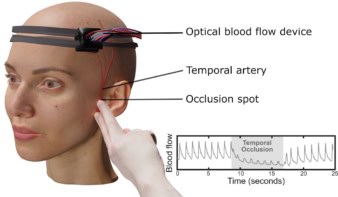
Reduced radiation dose and shorter exam times for PET/CT scans are big advantages for cancer patients, who may require multiple scans during their treatment and who may find it challenging to remain motionless during a typical 20 min PET scan. Radiologists at the Wright Center of Innovation at Ohio State University Wexner Medical Center have managed to reduce PET scan duration to approximately 2 min, thereby reducing patient discomfort, minimizing motion artefacts and improving patient throughput.

At the recent European Congress of Radiology (ECR 2021), Michelle Knopp discussed the team’s latest beneficial innovation: lowering the 18F-FDG radiotracer dose from the standard-of-care (480 MBq) to the lowest amount allowable by product label (185 MBq). Results of a phase II prospective study of 105 cancer patients revealed that images acquired by an ultrafast 2 min PET/CT scan, using a 185 MBq radiotracer dose, are of diagnostic quality in patients with a body mass index (BMI) under 35.
The researchers performed 18F-FDG PET imaging 60–75 minutes post-injection using both conventional (90 s per bed position) and investigational (9 s per bed position) acquisitions. For the ultrafast acquisition, the researchers used an organ-, BMI-adaptive regularized reconstruction, which takes into account the bed location and the patient’s BMI. For the 90 s acquisitions, they employed standard EARL reconstruction techniques.
Two blinded readers independently performed visual and quantitative assessment for each data set. Knopp reported that for patients with a BMI under 35, both sets of images were of diagnostic quality. However, for patients with a BMI of 35 or greater, only eight (35%) of the ultrafast, low-dose exams were of diagnostic quality.
“Combining the third-dose with the ultrafast acquisition (9 s versus 90 s per bed position, for a total acquisition time of 2 min versus 20 min) represents an exam time that is one-tenth of the normal time,” explained Knopp. “This is a critical point for many patients, as faster imaging allows for less patient discomfort, leading to less motion artefacts. Additionally, faster acquisition opens the door to dynamic imaging of tracer uptake, which may help reveal additional clinical information about therapy response in cancer patients, and activity of infection in patients with infection.”
“Using these techniques, we are acquiring the source data at about one twentieth of the normal count density,” she added. “Previous reconstruction methodology was generating very noisy and blobby images. The adaptive regularized PET reconstruction approach has opened the door to EARL-equivalent diagnostic image quality.”
Knopp tells Physics World that based on the findings of the phase II study, new research will focus on 15 s per bed position (3 min total acquisition time) whole-body PET scans for patients with higher BMIs. She and her colleagues are currently conducting a phase III clinical trial to investigate this approach.
PET-based lymph node assessment
Surgical sampling of axillary lymph nodes in newly diagnosed breast cancer patients is essential to assess their nodal status and plan suitable treatment. But this procedure can cause discomfort and pain for the remainder of a survivor’s life. Being able to accurately determine nodal status with diagnostic imaging could eliminate unnecessary surgical sampling in node-negative patients.
At ECR 2021, Janna Morawitz, from the Institute of Diagnostic and Interventional Radiology at the University Hospital of Düsseldorf, presented the findings of a study comparing the use of four imaging modalities to assess nodal status. The multi-institute analysis revealed that thoracic 18F-FDG PET/MRI outperformed axillary sonography, breast MR and thoracic MRI in determining the axillary lymph node status of women with newly diagnosed invasive breast cancer.
The study included 44 patients with positive nodes and 68 with negative nodes, based on histopathological diagnosis. All patients underwent all four imaging exams. Thoracic PET/MRI exhibited both the highest accuracy (90.18%) and sensitivity (81.8%) of the four modalities, followed by axillary sonography, with an accuracy of 87.04% and a sensitivity of 69.1%.
Thoracic PET/MRI also had the highest negative predictive value, at 89.0%, followed by axial sonography at 83.3%. However, axillary sonography, the most commonly used imaging exam, had the highest specificity (98.5%).

Technology advances improve imaging for paediatric patients
Morawitz reported that eight patients with positive lymph nodes were missed by PET/MRI, but that these were also missed by the other three modalities. In total, axillary sonography generated 13 false negatives, followed by thoracic MRI (16) and breast MRI (17). Axillary sonography had the lowest number of false positives, with only one case, followed by thoracic MRI with two cases, and then breast MRI and thoracic PET/MRI with three each.
“In a clinical setting, the combination of PET/MRI and axillary sonography might be considered to provide even more safety in making a diagnosis and in reducing the number of unnecessary surgical samplings performed,” said Morawitz. “Radiologists could use PET/MRI as a searching tool because of its high sensitivity, and add axillary sonography afterwards to specific findings if suspicious lymph nodes are identified.”



